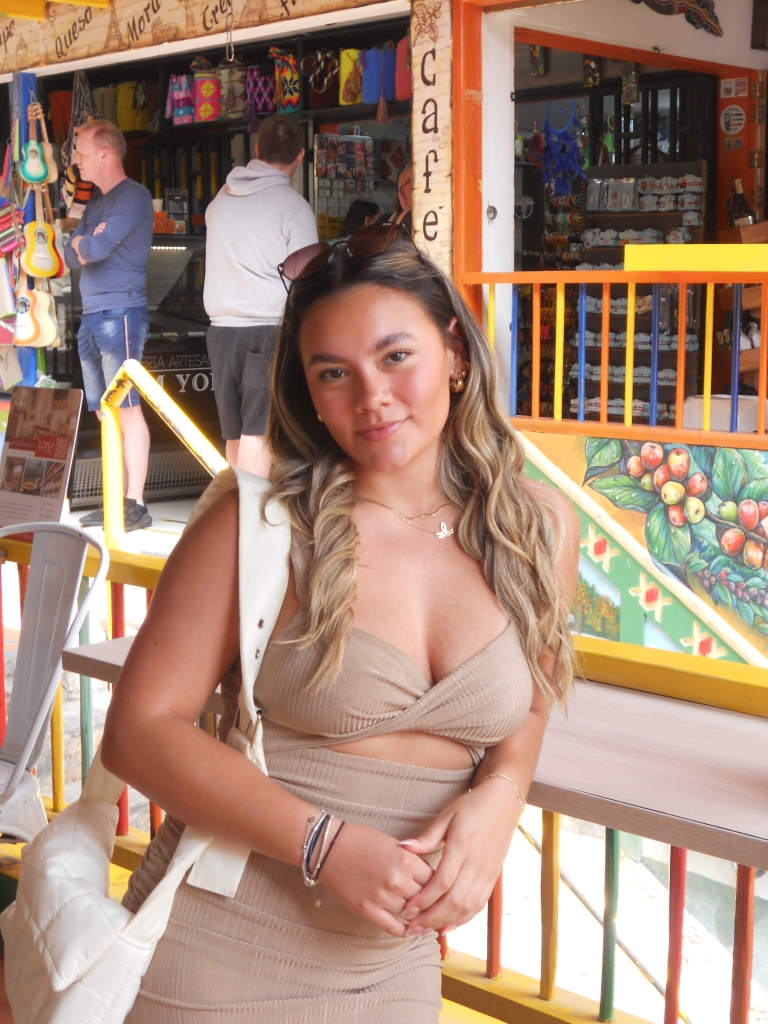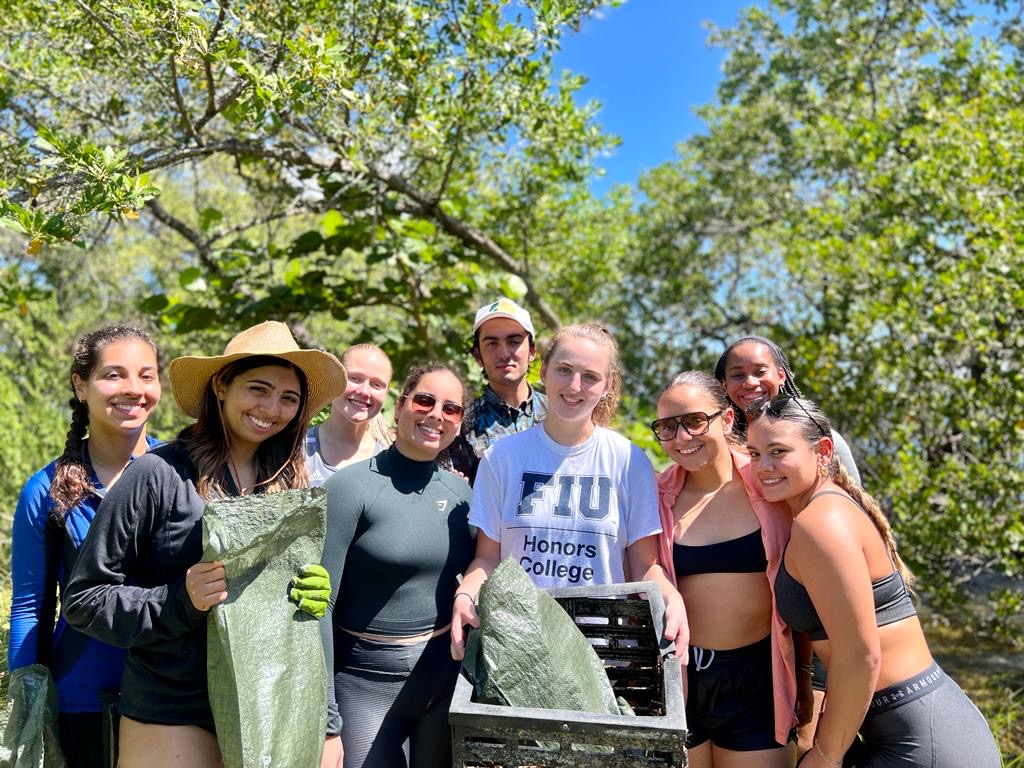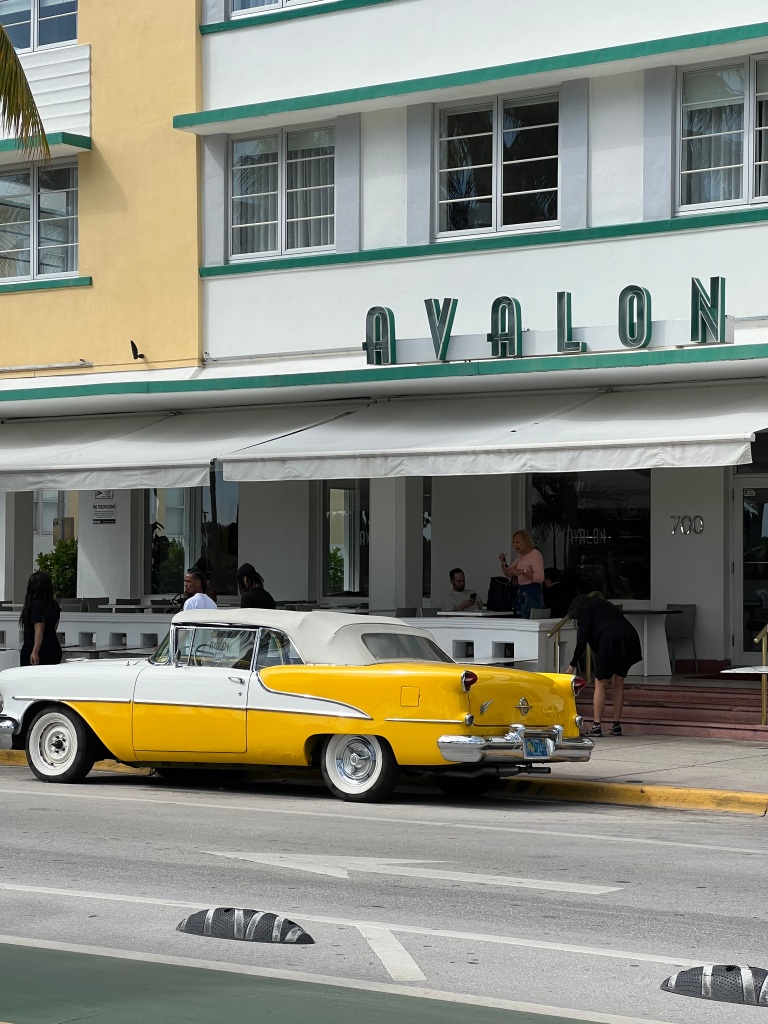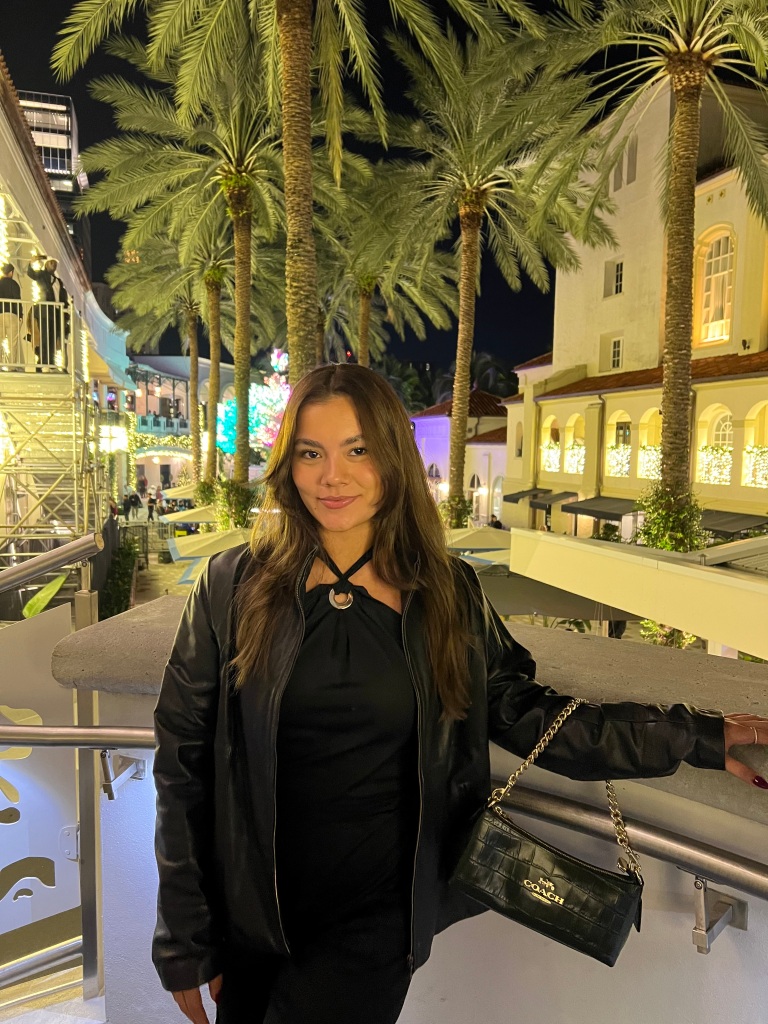
Isabella Jaimes Suarez is a junior Honors College student at Florida International University pursuing an Undergraduate degree in Marketing. She was born in Colombia, moved to Panama when she was three years old and was raised in Panama. She moved to Miami for a new stage of her life which is college and is thankful for her decision. She would like to specialize in the Digital Media area of marketing by focusing in Health & Fitness.
Art Encounter as Text
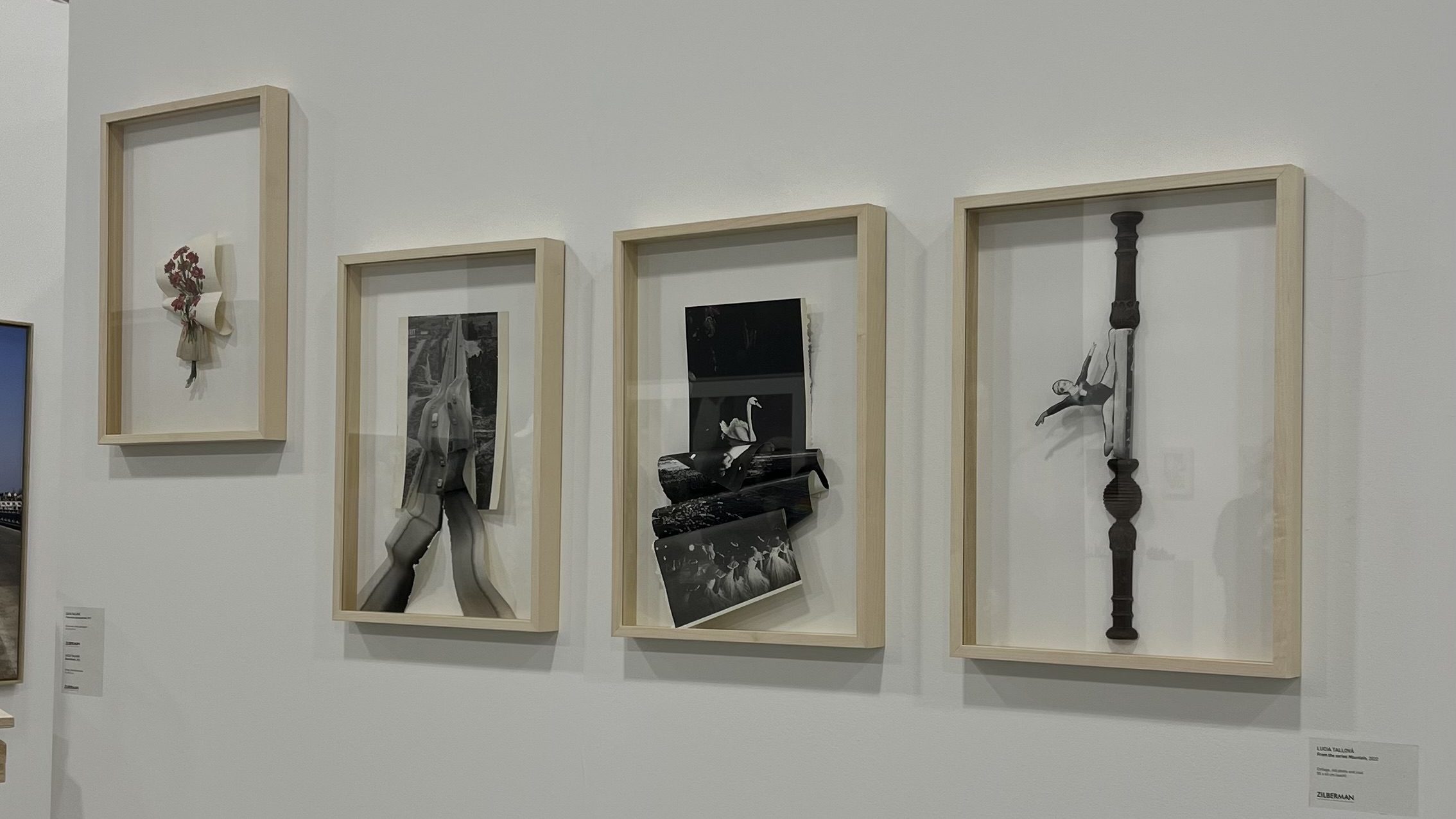
“The art is a mirror reflecting the expressions of the human experience.” by Isabella Jaimes of FIU, January 18, 2024
As a college student living in the vibrant city of Miami, my connection to the local art culture is somewhat contradictory—I found myself in the middle of it, yet my understanding remains relatively limited. The question of how well I truly know Miami’s art scene cause a contemplative reflection. While I may navigate the streets and beaches of this city with familiarity, my knowledge of its artistic heartbeat is developing.
The contemporary art is a terrain I’m eager to explore. Surprisingly, Miami emerges as a leading city globally for contemporary art, a fact that had avoid my awareness until recently. The comparison of my physical presence in a city known for pushing artistic boundaries and my lack of deep engagement with its art scene creates a curiosity that made me to enroll in an art class. The desire to bridge the gap between my physical presence in Miami and my limited understanding of its art culture is a captivating fact for me. There’s a want to discover the essence of the canvases that describe the city and the stories they tell. Miami, with its diverse population and cultural mosaic, is a productive area for artistic expression. Enrolling in this class is a clear step toward resolving the many doubts about the art world in Miami.
When thinking about the image that art creates in my mind, a mosaic of colors, emotions, and interpretations emerges. However, the depth and significance of these impressions remain difficult to find. Art, to me, has been more of an aesthetic encounter than a deep exploration. I’ve always felt like the canvas is a mirror reflecting the expressions of the human experience, and yet, I find myself trying to really figure out the meaning behind every art piece and engage more with the narratives being told.
I anticipate a journey full of discoveries—to be able to understand the artistic expression, to reveal the core messages and intentions. I hope to understand the variation of contemporary art, to figure out the language of colors, shapes, and forms. Moreover, I seek to comprehend why Miami holds a prestigious position in the global contemporary art scene. This class represents an opportunity to go beyond the superficial appreciation of art and get into its profound impact on society and culture. As I start on this artistic exploration, specific places and events in Miami attract my curiosity. While I may not have focused on a singular destination, the expectation of involving myself in Miami’s art scene is exciting. It’s the Wynwood Walls, where street art transforms an entire neighborhood into an open gallery, or the renowned Art Basel Miami Beach, attracting artists and art enthusiasts from around the world. As I have mentioned it before, I love Wynwood Walls because it’s such an experience when you walk through the streets and this was even the theme for my fifteenth party. The possibilities of discovering these spots within the city is the main factor behind my interest for this class.
In other words, my journey into the world of art is a journey into the soul of Miami. It’s an exploration of the city’s vibrant cultural identity and an attempt to get to know a deeper connection with the artistic expressions that surround me. This class, I believe, will be the evidence for a changing experience—one that expands the boundaries of a traditional educational learning and becomes a personal experience of self-discovery through the world of art.
Norton as Text

“The silent conversation between the creator and the observer” by Isabella Jaimes of FIU, January 28, 2024
As an international student, the opportunity to explore the cultural offerings of my host country has been an enriching and eye-opening experience. Recently, I had the chance to visit the Norton Museum of Art in West Palm Beach, and it turned out to be a an enjoyable experience into the world of creativity and expression. I have been a couple of times in West Palm Beach since my boyfriend was born there and his family still live there. Because I was familiarized with the visualization of West Palm, “The Norton Museum of Art” reflects the vibrant city of West Palm Beach, it is captivating the imposing architecture and promises of a diverse collection. As I entered, I said to myself I was really going allow me be open minded and be a listener to the world of art. One of the first exhibits that caught my attention was a collection of contemporary paintings that transmitted conventional boundaries. The vibrant colors and abstract forms seemed to speak a universal language, it goes beyond the limitations of words. As an international student, I found comfort in the fact that art, in its multiple forms, could be a bridge connecting people from different corners of the world. It was a reminder that creativity knows no borders and that emotions and expressions are shared human experiences.
One particular exhibit that called my attention the most was the first one that we visited, the Chinese exhibition. This is because my grandpa has always had an obsession with the Chinese culture, as well as my grandma. My grandpa used to collect Chinese swords and my grandpa would collect the plates and the tea cups. This is because my grandpa has a big respect and impression of their culture. This is what happened to me when I walked into this exhibition, it brought me memories but on top of that is such an impressive and beautiful experience to watch this legendary artifacts. Walking through the museum, I encountered an impressive display of sculptures, each telling a unique story. The movement of these artworks allowed me to build a connection. I could perceive the artist’s intention through the textures and shapes, it was like a silent conversation between the creator and the observer. It surprised me how, despite coming from a different cultural background, I could appreciate the universal themes of love, struggle, and triumph projected through the sculptures. The museum’s commitment to showcasing diverse artists and perspectives was evident in the global art collection. From ancient artifacts to contemporary installations, the Norton Museum of Art offered a collection of cultures and histories. This was a valuable opportunity to learn about the country’s variety of influences and to see the coordination of global artistic movements.
I am beyond excited for what is about to come for this semester, as the first class it was such a good experience which makes me more intrigued about the other classes. The Norton Museum of Art fueled my curiosity, expanded my perspective, and reinforced the idea of, despite our differences we are all part of the same story. The story of humanity as told through the marks of a brush and the sculptures.
Margulies/Bakehouse as Text
“The art fulfillment in space and emotion” by Isabella Jaimes of FIU, February 11, 2024

My recent visit to “The Margulies Collection at the Warehouse” and “Bakehouse”, was an eye-opening experience. I must admit, I initially felt out of place in theses sophisticated environments, but as I involved myself in the art and listened to the lectures, I began to appreciate the depth and diversity of the pieces on display. One of the most striking aspects of “The Margulies collection at the Warehouse” was its absolute scale. The warehouse itself provided an impressive setting for the artworks it housed. I would just stare on how enormous the place was and even the imposing works of art. It made ,e wonder from piece to piece how were they able to fit everything, it made me contemplate their size and they space they were placed. Another factor that engaged me the most with the experience was that we had the opportunity and the benefit to receive guiding from the creator and the artist behind this impressive space. Learning about Martin Z. Margulies, the chief contributor behind this collection, added another layer of significance to the experience. His efforts, particularly his support for the for the Lotus House Women’s Shelter, underscored the intersection of art and social responsibility. It is really inspiring to see how art could be used as a tool for community engagement. One artist whose work left a lasting impression on me was Magdalena Abakanowicz. They mentioned the insights into her creative process and the profound themes underlying her sculptures. Her exploration of the human form, as abstracted as it looked, it spoke to universal experiences and emotions. As someone with little background in art, I found myself drawn to the raw quality of her work and the questions it raised about the human conditions. Because it marked me with the message of “All look the same, but they are all feeling or going through different emotions”.

Exploring the “Bakehouse” added and intimate and community-centered dimension to my art education in Miami. Situated in a more modest setting compared to the greatness of “The Margulies Collection at the Warehouse”, the Bakehouse provided a unique opportunity to witness the intersection of art and everyday life. What called my attention the most at the Bakehouse was its sense of openness and accessibility. Unlike traditional museum spaces, which sometimes can feel too formal, the Bakehouse transmits a welcoming atmosphere, inviting the visitors to engage directly with the artists and their creative processes. As we walked through the studios, there is a diverse range of styles on display which is amazing, because it is out of the traditional. What I gained from the lectures, was comprehending the importance of community engagement and collaboration in the artistic process. We were able to visit two artists displays which were completely different form one another. The uniqueness and personal signature that they create on their projects is so admiring. This emphasis on inclusivity and accessibility it really had a meaning, it reinforces the idea that art is not just for the elite few, but something that can and should be enjoyed by all. I understood that the Bakehouse served as a vibrant hub for artistic experimentation and innovation. It brings artists to push the boundaries of their craft to established practitioners looking for new ways of expression, the Bakehouse provides a supportive environment for creative exploration and risk-taking.
Overall, my visit to this amazing places were a transformative experience. It really engaged me with unfamiliar ideas and perspectives, and appreciate the power of art to provoke thought, create emotion, and build connection. While I may still have much to learn about the insights of art history and theory, this experience has created a new curiosity and appreciation for the incredible diversity of artistic expression.
Art Wynwood as Text
“Inspired by Hispanic artists echoing our cultural heritage through a universal visual language.” by Isabella Jaimes of FIU, March 3, 2024
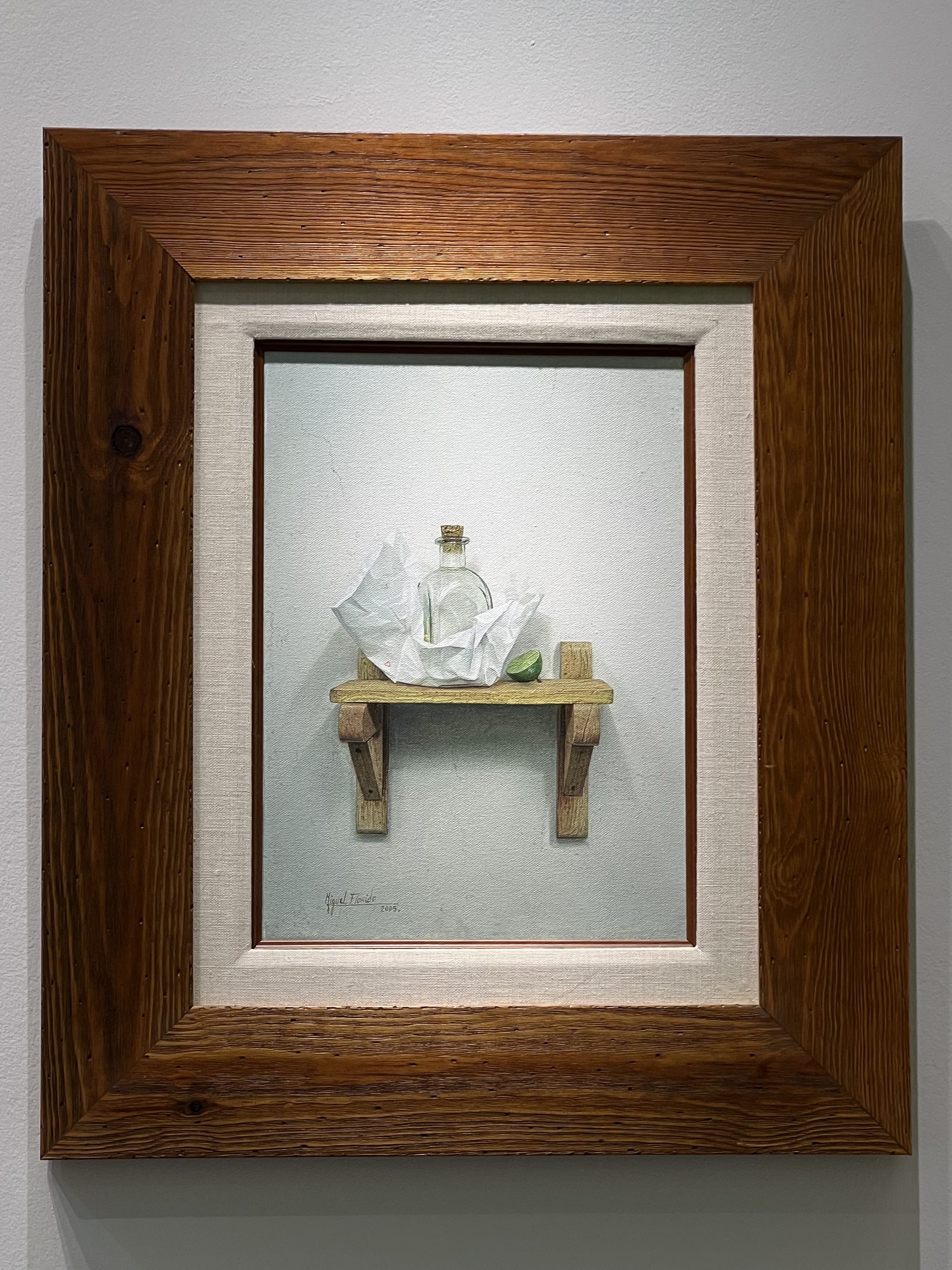
My journey to Art Wynwood was more about exploration and expanding my insights rather than knowing what to expect. With an open mind and a hint of curiosity, I found myself in a space of expression. Art Wynwood was a captivating immersion into the dynamic world of contemporary. This event appears to happen every year and it really serves a s an enriching opportunity to witness a diverse range of artistic styles and perspectives. One of the many highlights I would say was the emphasis on pushing boundaries and exploring new frontiers in art. It was evident in the inclusion of cutting-edge digital art, the interactive installations and a lot of experimental multimedia works. We focused certainly on Cernuda’s Art exhibition. Which called my attention the most because it really had the cuban essence behind every single artwork.
Stepping into this exhibition space, I was immediately struck by all the vibrant colors and intricate details of the artworks displayed. Each piece seemed to tell its own story, it called my attention once again the uniqueness in the style and perspective. Either way I do not have a deep knowledge about art, I could have a sense of appreciation for the skill and imagination that happen through the process of creation for these masterpieces.
One of the first things that caught my eye was a series of paintings depicting scenes from everyday life, infused with elements of the Cuban culture. From energetic streets to serene landscapes, each of the paintings captured the essence of Cuban life. As we continued to explore the exhibition, I found myself drawn to a collection of sculptures that seemed to confront gravity with their shapes and dynamic poses. These sculptures really seemed to come alive, releasing a sense of movement and energy that was impressive. There was something for everyone to appreciate and enjoy along this exhibition.
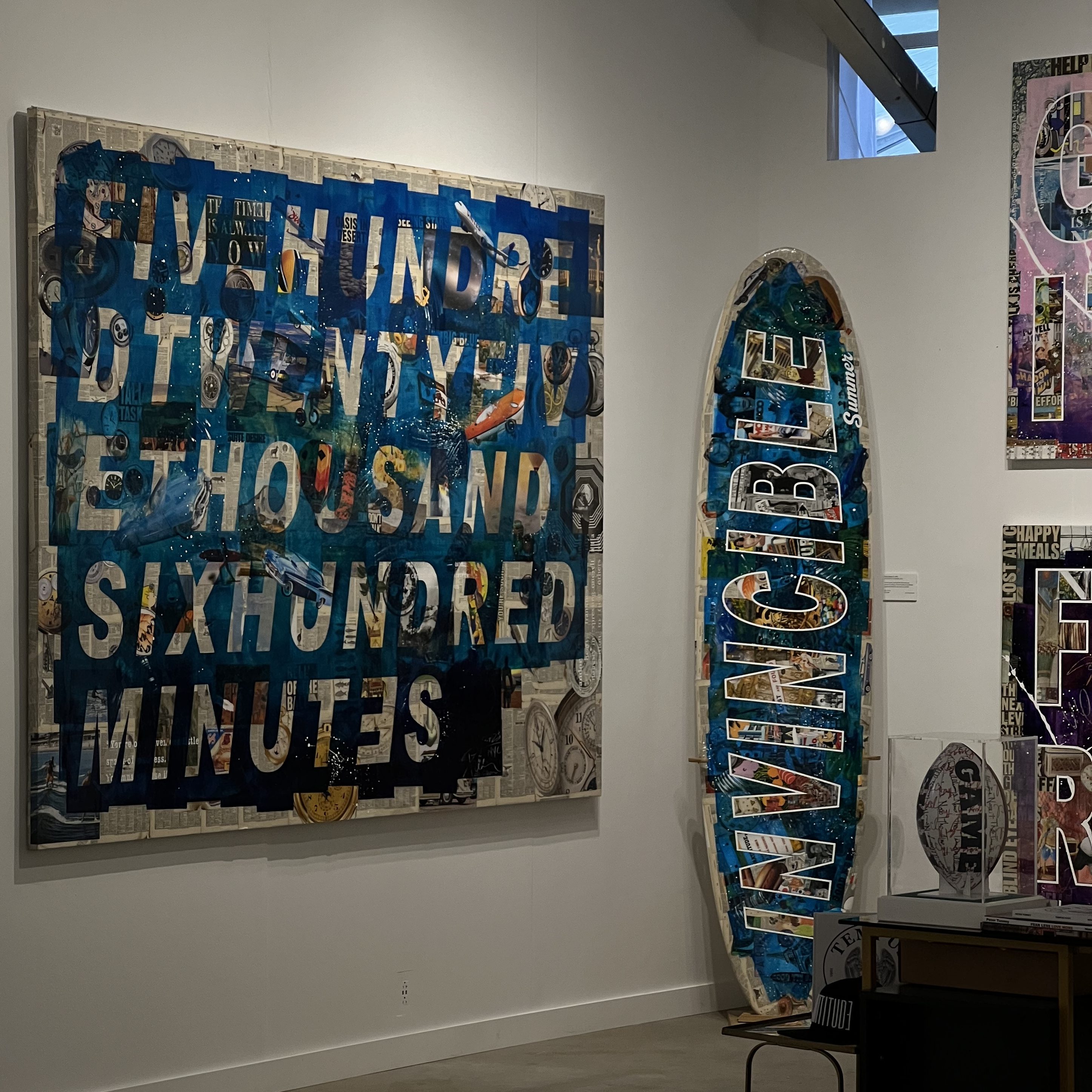
What I like the most about this types of events is how open and varied are the perspectives form every singles artist. Is like you come into this space to navigate and connect with every singles artists in there. You walk into one exhibition and is one language, but then you walk into the exhibition right next door and is a whole different or even opposite language. It really is something you could never get bored about, we get to explore and admire completely different masterpieces and always get to learn a new story. This events also provide opportunities for education and engagement and serve as a platform for artists from diverse cultural backgrounds to share their signature and essence. The audience is able to admire from local talents to international stars which makes it even more impressive.
Art Wynwood was a whole experience that left a lasting impression on me as a student exploring the world of art. It created a newfound appreciation for the power of creativity. This inspires me to continue my journey of discovery and exploration in the realm of art. I am filled with anticipation for the uncountable possibilities that lie ahead in my tracking of artistic understanding.
Rubell Museum as Text
“The way appreciation for contemporary art has grown on me.” by Isabella Jaimes of FIU, March 17, 2024

I was really excited about the main destination for this date, the Rubell Museum. This is because a week before this class, I visited the SuperBlue Museum which I liked. However, I felt that it was a little bit overpriced and it did transmitted a nice message but we completed the visit in less than an hour or maybe an hour. There was not a lot of engagement in the exhibitions. This same day I mentioned it to a friend about the experience and I was told the Museum right in front of it was three times better. Once I heard that I kept the feeling of curiosity to visit that same museum. The same day of the class I found out we were visiting that same Museum that I have been wanting to go.
One of the most memorable visits was to the rubble Museum, it was a really unique institution that has reshaped the contemporary art scene in Miami. I loved that it had a drop of essence from every culture, it was really modern or adapted to our generation I would like to say. It seems to have a role as a cultural advocate and resource of both the public and the art world. Apparently, it used to show as the Rubell Family Collection and then had a transformation into a public institution that highlights its commitment to access to art. During our visit, there were three works that called my attention the most, I am no including the entrance hallway filled with the silver spheres which I absolutely loved. The first one was Maurizio Cattelan’s provocative installations that challenged conventional notions of art and the artist identity. He had a playful approach with his work by using his own image to bear meaning in his work. The piece “La Rivoluzione Siamo Noi”, invited viewers to question established norms and expectations within the art world. I have learned about myself that in the art aspect or in the art industry what I admire and like the most are the sculptures. Because of this, the second one was Karon Davis’s “Family” sculpture piece resonated deeply with me, addressing issues of history, race, and violence in the United States. Through her use of materials, Davis creates haunting narratives that prompt reflection on societal injustices and individual experiences. Third but not last one because I honestly liked almost every exhibition in this museum, Zhu Jinshi’s abstract “Power an Kingdom” painting is characterized by its thick and textured layer of paint which evoked a sense of depth and movement. Every step that I would take closer to the painting it looked even more unreal for how real was the illusion that the paint could be “fresh”. This painting reveals a commitment to pushing artistic boundaries and challenging the aesthetic.
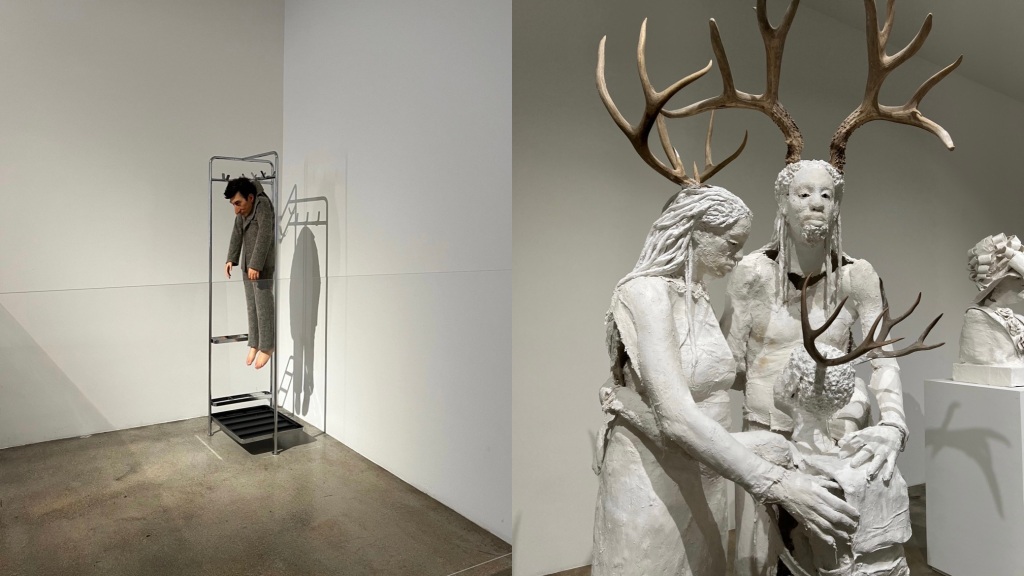
The Rubell’s Museum dedication to showcasing such a diverse arrangement of contemporary art reflects on Miami’s vibrant arts ecosystem. This museum really stands out as a catalyst for artistic dialogue and innovation. After this visit, the appreciation on me for contemporary art and its power to cause thought an emotion has grown. Lastly, we visited the “Emerson Dorsch” where there was a lot of work in imagination. From abstract sculptures to thought cause installations, each piece seemed to have a message or a story behind it. I enjoyed and really appreciated the lectures that were given and how genuine it was. The experience was very welcoming and more conversational rather than superficial information.
PAMM as Text

“The power of art empowering our imagination.” by Isabella Jaimes of FIU, March 31, 2024
This day it was truly a whole experience, kind of a mix of emotions. Starting by the weather, it was probably the worst it has rain in any of the classes in this semester. Also, is the only class we have decided to ride the metro since it was Music Festival week in Miami and even though we kind of knew where we were going, so we got of lost and arrived late. It is funny because once I saw the hall or the hanging blue plastic strands, I remembered right away that I have been there before. When I was little I visited the Frost Museum and walked through the outside of the Perez Art Museum. As a first impression, I loved the architecture and the structural design on the outside of the museum. The way it was distributed it was really unique and beautiful, however, we could have enjoyed it way more if it was not for the weather.
We started by appreciating Joaquin Torres-Garcia’s artwork, which it called my attention because the paintings were very descriptive about Argentinian traditions and what a coincidence that we had the pleasure to have a very interesting guide or speaker who is from Argentina. Joaquin incorporated symbols derived from ancient cultures of the Americas as part of his theory of “Constructive Universalism”. Through this paintings you could observe how he had the intention of involving the translation of ideas into signs and symbols through geometry. The good or golden compass was mentioned, I have never heard about it before but it was a special meaning for artists. We were able to see a painting from one of the artists we have appreciated before in other of the museums. What caught my eye from this artist’s work is how impressive and unrealistic it looks but is the process and the objective. These are paintings that happen through a photography reference, and is the lighting, the shadows, the texture of the skin, everything that makes it the perfect “picture”, but it is really a painting.

Taylor Anderson, the lady I mentioned before who gave us the guided class during this day. She mentioned how in the exhibition that was next it was interpreting ghosts. But I did not think it was going to be as literal. Fist of all, I absolutely adore the utility of the colors, the contrast, and the elegance that the white and the gold provides. This is Gary Simmons’ exhibition called “Public Enemy”, which provides and understanding of the complex and profoundly moving work of this influential artist. He analyses histories of racism in the US visual culture in the fields of sports, cinema, music, and literature. I think this is the artist that I liked the most, probably from the museum or maybe even from all the museums. Another of his art piece that I loved is “Wake”, the simplicity of the process in this work is big on the message or the idea it provides. There was a question made about if the purpose of the artist is to interpret a movement in the painting or vanishing. But it is a little bit of both, because it is information blurring in and out. What were once visual fragments of significant cultural or historical locations become a creation of our imagination.
In conclusion, exploring these works and art pieces from this incredible artists offered me an insight into diverse cultural perspectives and artistic techniques. The architectural beauty of the museum itself added to the overall impression. After this visit, I appreciate the ability that these art works have to start meaningful conversations about history, culture, and society.
Wolfsonian as Text
“Art Illuminations on Creativity, Community and Cultural Transformation.” by Isabella Jaimes of FIU, April 14, 2024
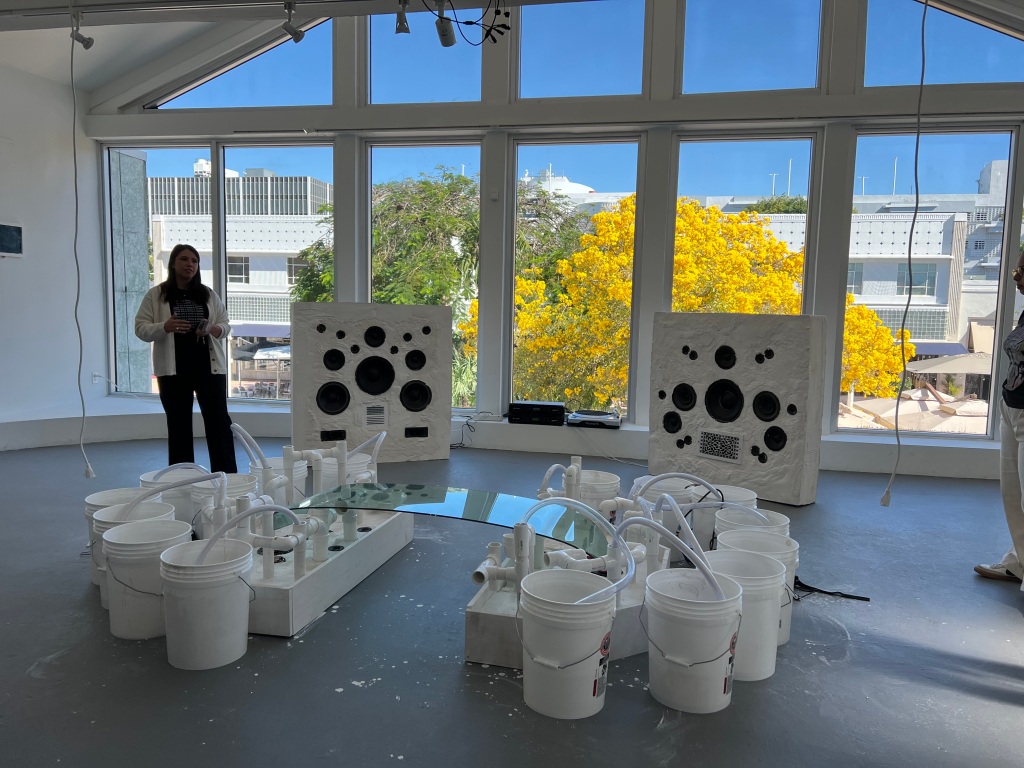
It was really impressive to have the privilege to visit one of the most valuable and representative buildings that FIU owns. I honestly did not hear about the Wolfsonian Museum until this semester thanks to this class. Located in the hear of Miami Beach, this museum is not only a repository of artifacts; it is clearly a testament of persuasive power of art and design in shaping our generation’s perceptions of the modern world. Once I stepped into this museum, I was honestly struck by its objective to explore the multiple aspects of modernity through a diverse collection of objects. Each of the objects transmitted the sensation of a window into the social, political, and technological changes that have defined our history. It shares the importance of learning from the past as we all navigate the complexities of the present and the future.

I also want to mention the impact that “Oolite Arts” had in this class. Even though this was not planned in the itinerary, I feel like it was a most to make this stop. I have realized that I enjoy the most when we go to environments like these were they support the arts community. This organizations provides a variety of resources and opportunities for artists at all stages of their careers. This places are residency programs that offer studio space and professional development for emerging artists. Oolite Arts was like a hub for artistic exchange, and it brings together artists and community members to engage in meaningful conversations about art and its role in society. It is really inspirational by the huge variety and diversity of voices and perspectives that were visible within this walls. The two artists that called my attention the most were Diana Eusebio and Lee Pivnik. Although, we had the opportunity to listen four resident artists, both I mentioned are the ones that I appreciated the most because the work they do and their essence remarks a big difference is like something that I have never seen before and even they implement art in ways that I had no idea it was possible. Diana Eusebio is a really nice person and she really shared her passion for what she does. The combination that she has by complementing old techniques with the modernity and technology of nowadays it is really unique. Also, the base of her work is fabric which how I said it was an unexpected dynamic to imply art. It remind me of my culture, my grandma used to work with the sewing machine during my whole childhood and it something I grew up with. The essence of her artwork really transmits a story behind every art piece. As the second artist, Lee Pivnik, he makes lamps from scratch with stained glass that seems like a pretty magical and fantasy work. But not only that, he had such a variety of art pieces that were completely difference but somehow had his signature. He even shared he had an in Teresa in interior design and he was working on creating something for a video game and it was honestly really impressive.
In conclusion, my s=visits to both The Wolfsonian-FIU and Oolite Arts have left me enriched by the transformative power of art and creativity. I feel like this was an opportunity to base my beliefs in the power of art to inspire and unite. This is a reminder to the importance of embracing diversity and suing art as a force for positive changes in the world and specially in our generation.
Art Final Reflection as Text

“The most genuine way to fall in love with Art.” by Isabella Jaimes of FIU, April 21, 2024
This is one of the classes that I could sincerely say I am the most grateful, because of the amount of knowledge, insights, and experiences that this course had provided me through this semester. It has been a pleasure to learn from professor Bailly, he is the type of professor that genuinely likes and knows what he is teaching and establishes connections with his students. The way he teaches and the dynamic he uses grabs the attention because more than informational and theoretical is really informative in a way that you just keep making questions and want to know more in detail. I feel like this semester was smoothly completed and time went by so quickly because the majority of us already knew professor Bailly, which this made the atmosphere way more comfortable and trustworthy.

I have gained so much knowledge through this semester about the art world. The level of appreciation that I have for art now has been increasing and it has been enriched thanks to this class. I have encountered the ways to find art in every aspect and shape. Art is everywhere you go. Through the exposure to various artworks from different cultures and time periods, I could gained a deeper appreciation for the diversity of human expression and creativity. Understanding the historical and cultural context behind each piece really provided insight into the values, beliefs, and traditions of different societies. Seeing how artists experiment with form, color, texture, and composition can encourage anyone to push the boundaries of their own artistic practice, or even in my case that I do not really do art but it grew on me the many ways I can see art. What I also notices is that when analyzing and interpreting artworks I was able to enhance my critical thinking skills as I consider the artist’s intentions, the message conveyed, and the impact on the person admiring it. All this delving into the art history through museum visits, deepened my understanding of the past and its influence on the present. Observing the reflection of art in historical events can provide valuable insights into the human experience across time. Also, every time there would be asked “What do you see in this painting?”, it was so enjoyable getting to hear everyone’s perspective because you get to realize how different but also similar we all are.
My two favorite visits were to Rubell, Margulies, and Oolite Arts even though this one was not included in the scheduled visits. Personally, this were the places where I was able to connect with the most. I felt identified with some factors of this places and also I learned how to appreciate art in its multiple aspects from maybe any experience or connections fro this places mentioned. It was just impressive how my attention was caught by every exposition en every corner and space from this selected museums. There was a little bit of everything and there was catchy message behind every artwork.
The experience during Art in Miami course has provided a comprehensive education that extends far beyond the realization of art, it fulfilled my semester with valuable skills, insights and perspectives that will somehow serve me well in various times and aspects in my life.
